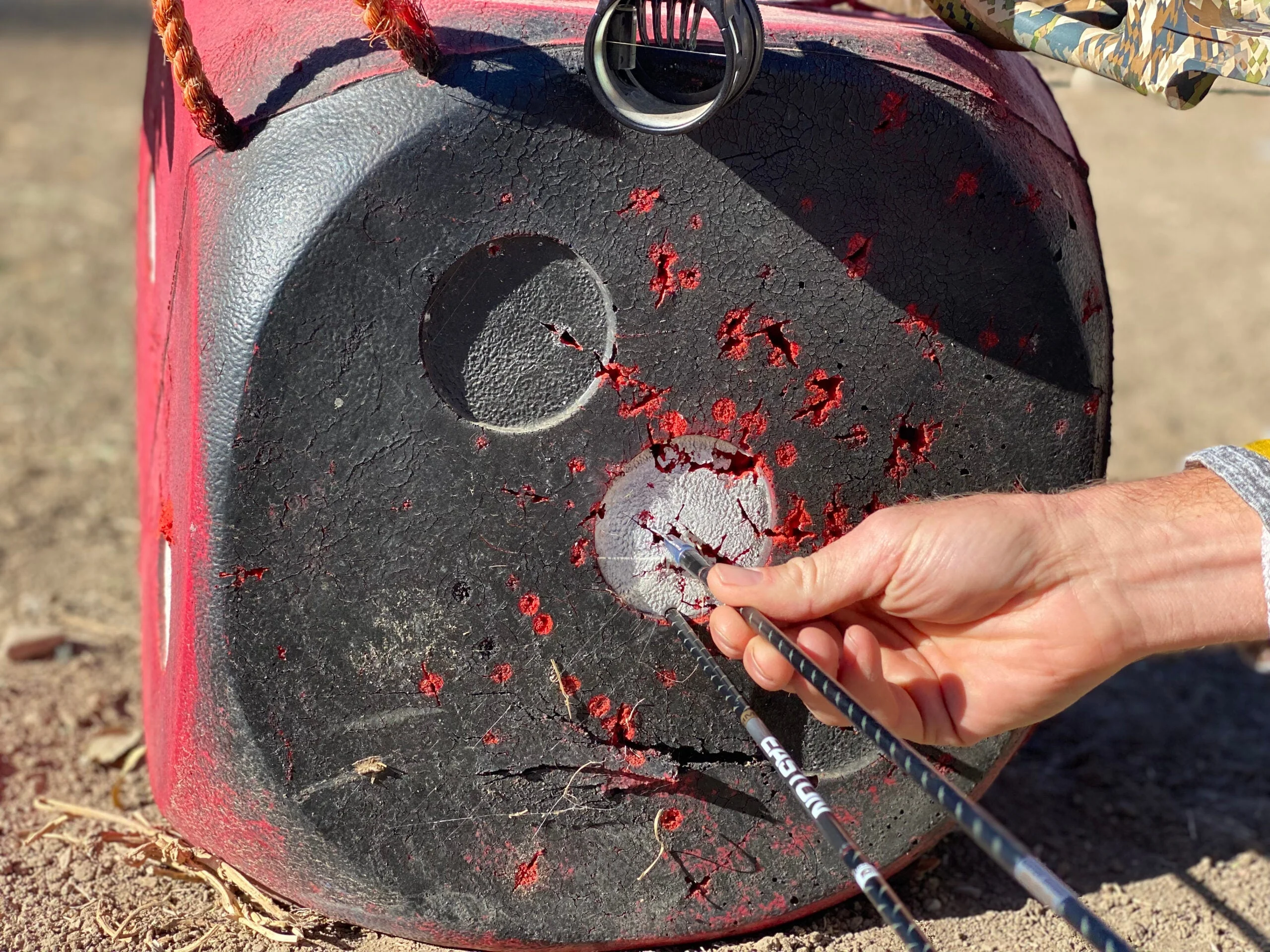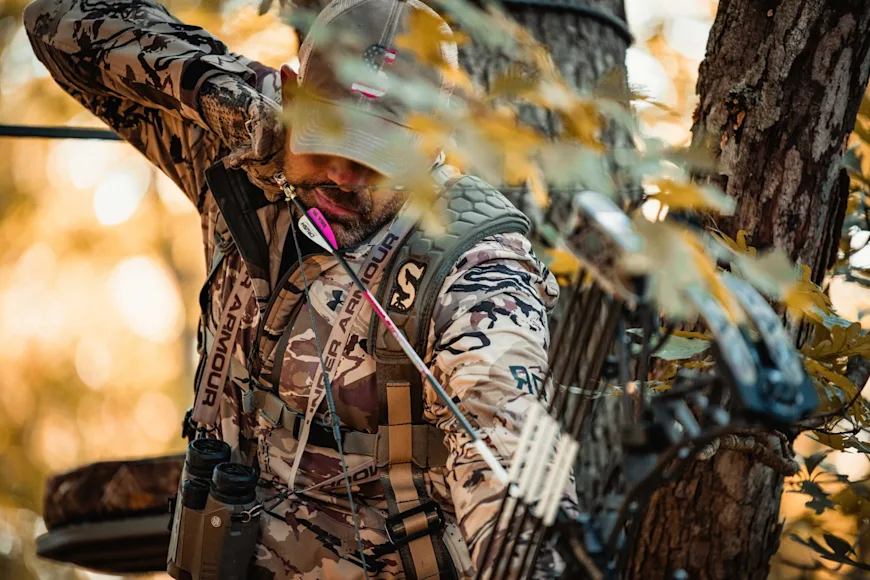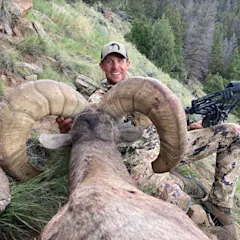Bow Bootcamp is a 10-part series designed to get you, your equipment, and your skills in peak shape ahead of the first fall seasons. That means gear checks, accessory tweaks, precision bow tuning, and shooting drills to get you totally dialed in just in time. In Part 1, Part 2, Part 3, Part 4, Part 5, Part 6, and Part 7, we got your bow and arrows fully ready for the next critical step below: broadhead tuning.
YEARS BACK, I failed to practice with my hunting broadheads, and it cost me a good bull elk. These weren’t big fixed-blade heads, either. They were slim, guaranteed-to-fly-like-a-field-point mechanicals. Only they didn’t. Don’t make the same mistake. Whether you plan to hunt with a fixed-blade, mechanical, or hybrid-style broadhead, it is essential to spend some time practicing and tuning your bow to the broadheads you plan to place into your quiver’s hood.
“Broadhead tuning” is a slightly confusing term. It almost sounds like you need to tune the broadheads themselves. In fact, it’s as simple as shooting your hunting broadheads through your already tuned bow to make sure they fly as true as your field points. If they do, you’re pretty much done. If they don’t, you may need to do a little additional bow tuning to get them in line. Here’s how to go about it.
Related: Best Compound Bows of 2025, Tested and Reviewed
Buy Extra Broadheads for Practice and Tuning

When you make your seasonal broadhead selection, buy an extra pack that you will use for tuning and practice. Some broadheads come with a practice head in the package, and some practice heads can be purchased separately. My advice: Don’t settle for a practice head—at least not in most cases.
I have shot and tested hundreds of different broadheads over 15 years, and the only two practice heads I’ve shot that routinely fly just like the broadhead they mimic are those from Rage and SEVR. SEVR’s mechanical broadheads are unique because they sport a second hole in the ferrule that accepts an included set screw that locks the blades. This system allows you to practice with the same head you hunt with. I have taken animals with SEVR’s 1.5 and 2.0 heads that I had previously taken hundreds of practice shots with. When I’m not shooting a SEVR or a Rage, I buy a three-pack of the real thing and use them as my practice broadheads. I know, it’s a little expensive, but it’s worth it.
Compare Field Points to Broadheads
If you’ve been following along with this series, your bow is already finely tuned and spitting bullets. So grab your bow, field-tipped arrows, broadheads, and a foam target. Place the target at 20 yards and shoot a field point into a dot no more than 2 inches in diameter. Then take another shot from the same distance with your broadhead of choice. If you know you made good shots with both and they are both in the dot, move back to 30 yards and repeat the process. Stay with the 2-inch dot to 40 or 50 yards and then switch to a 3- or 4-inch dot as needed out to 60 yards.

If your broadhead-tipped arrows are hitting inside the same dot as your field-tipped arrows out to 60 yards, your bow is broadhead tuned. I prefer to test my broadheads as far back as I’m comfortable shooting at game, but I’ve found 60 yards to be the magic number—meaning if they’re good out to 60, then they are good beyond 60 too.
Most mechanical broadheads and even some top-tier hybrid-style heads will closely mimic field-point accuracy when fired from a well-tuned bow. Still, you must prove this for bowhunting confidence. I have also shot some fixed-blade heads that are very close, with Muzzy Trocar being my favorite. But as a rule, fixed-blade heads will impact the target 2 or 3 inches right or left (generally right) and/or high or low (generally low) compared to your field points.
Move Your Bow Sight As Needed

If after the test above you find that your broadheads do not hit in the same place as your field points, the next step is to see if they group well. I don’t mind if my broadheads are grouping differently than my field points, as long as they are grouping. (Remember, you don’t have to risk breaking your heads or arrows by shooting groups at the same dot; you can shoot at different dots on the target still get a sense of how they “group.”) Generally, if your broadheads are hitting in a slightly different place as your field points but they are grouping well, all you need to do is adjust the sight. Simply make the needed adjustments to get your broadheads hitting center of center, and then shoot groups to verify it out to at least 60 yards.
Change Your Tune If Necessary

If, however, your broadheads are not grouping, or they group well at one distance but not at others, or you can see that they are not flying true at longer ranges, it’s time to tweak the tune of your bow to get them in line. This step involves moving your arrow rest instead of your bow sight, as above. Remember that a little movement goes a long way, and with today’s micro-adjustable rests, you can take your time and fine tune.
If your broadheads are hitting right of your field points, move your rest to the left. (This is the opposite of sight movement, which requires you to move your sight toward your arrow. So don’t get confused.) If your broadheads are grouping slightly lower than your field points, move your arrow rest up slightly. After every adjustment, no matter how minor, shoot a bunch of arrows to confirm. Don’t ever move your rest and assume you’re good to go. Always confirm.
Nine times out of 10, this step will requre nothing more than a very slight tweak to the arrow rest. That said, it can go a little haywire if you’re not careful, so keep in mind that if you ever need to get back on track, just do a quick walk-back tune with your broadeads. Most likely, it won’t be necessary and in short order your broadheads will be grouping within those 2- to 4-inch dots all the way out to 60 yards and beyond.
Related: Best Compound Bow Accessories of 2025
Do a Test Flight With Lighted Nocks
Some will frown on this tactic, but it’s proven beneficial for me, so I want to mention it. Try shooting your field points and broadheads in low light with lighted nocks, even if you don’t plan to use lighted nocks for hunting. You’re not worried about your accuracy when doing this, and you only want to look for nock travel (the tail-end of the arrow kicking left, right, up, or down). At this point in the process, your lighted nocks should be flying like darts, and assuming they are, it’s another confidence booster and a great sign that you’re ready for the fall woods.


